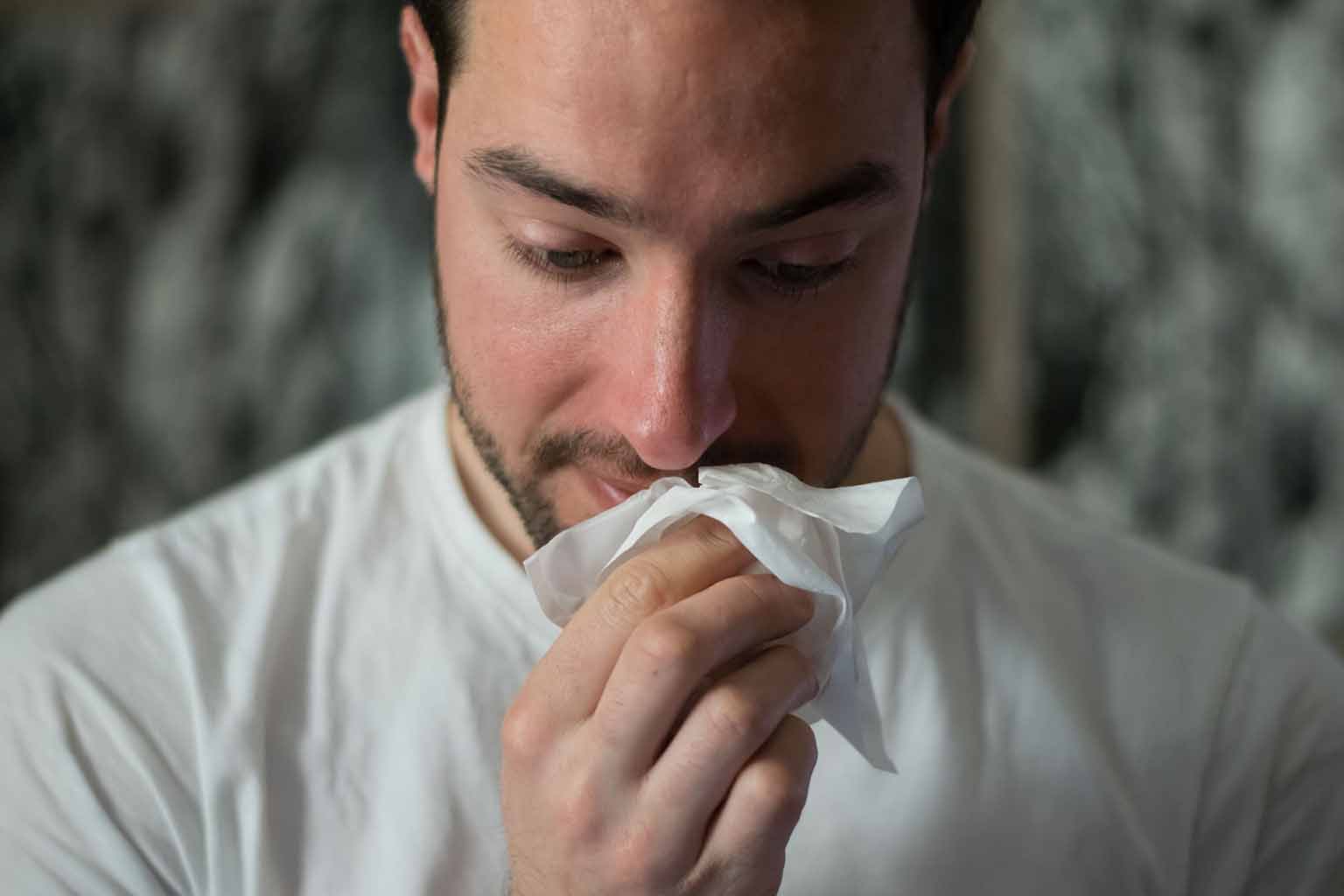If you are one of the over five million Americans who are allergic to dogs, thinking of canines as potential best friends might seem to be quite a stretch. Regardless of how cute, loyal and lovable they may be, the symptoms they cause can be daunting and even debilitating. However, the news is not all bad when it comes to your negative physical reactions to pups. Learning what causes allergies as well as the many ways to alleviate the symptoms might even mean that you can develop a much cozier relationship with the species.
Causes of Dog Allergies
In the end, the cause of your dog allergies comes down to your immune system, which is your body’s best defense against pathogens and invaders of all kinds. In the case of your dog allergies, your system is reacting to proteins in the animal’s saliva, urine or dead skin (dander) that it perceives to be dangerous. In reality, you are far more likely to be allergic to these substances than to the dog’s actual fur. Unfortunately, dander and saliva can be easily transferred onto surfaces, including furniture and even your clothing. This can lead to reactions that can continue long after you have separated yourself from the dog.
Symptoms of Dog Allergies
Your body’s reaction to a dog you encounter will probably be similar to what you experience with other allergies, a cold or even the flu. The most common symptoms include the following:
- Sneezing.
- Sore or runny eyes.
- Runny nose or nasal congestion.
- Itchy eyes, nose, throat or roof of the mouth.
- Cough.
- Sinus pain.
- Postnasal drip.
- Sleep difficulties due to discomfort.
- Skin symptoms such as hives, rash or eczema.
If these symptoms persist or compromise your quality of life, you might want to contact your doctor to discuss prescription treatment options.
Treatment for Dog Allergies
There are several effective medical treatments that can minimize the discomfort you feel when you come in contact with a dog:
- Antihistamines. These over-the-counter pills can block your allergic reactions, including sneezing, itching and runny nose.
- Corticosteroid nasal spray. This can relieve inflammation in your nasal passages.
- Decongestants. These remedies can reduce swelling in your nose and sinuses.
- Immunotherapy. Usually called allergy shots, this treatment occurs over time and is used to gradually desensitize you to the allergens to which you are reacting.
In addition to these pharmacological options, there are also several home remedies that many people find effective:
- Nasal irrigation using saline solution. This can be done by flushing out your nose with the aid of a neti pot or squeeze bottle, thus removing much of the built-up mucus and reducing congestion.
- Install a HEPA air filter in the one or more rooms in your house where you spend the most time. This, combined with regular cleaning, can cut down on the presence of allergens and help to reduce your symptoms.
- Keep dogs out of certain rooms in your house that you use a lot.
- Restrict your dog from climbing on soft upholstered furniture where dander and saliva can become trapped.
- Change to low-pile carpets or hardwood floors.
- After spending time with a dog, bathe and change your clothes.
- Groom your dog regularly, daily if possible. This should involve brushing and regular bathing. Note that different breeds require more or less frequent bathing, so ask your vet what is appropriate in your case.
- Use a cover on your dog’s bed that zips on and off, is machine washable and is dust mite-proof. Wash it frequently.
- Spray fabric surfaces on sofas or carpets with a fabric cleaner designed to reduce allergens.
- Find a vacuum designed for pet owners, and use it frequently to keep your dog’s favorite places clean.
Adopting a comprehensive cleaning regimen can go a long way toward making living with your furry friend a joy instead of a constant torture.
What About Hypoallergenic Dogs?
Many would-be pet owners wonder if they can avoid the allergy problem altogether by simply spending a little extra to get a hypoallergenic pet. The answer to this question is a bit more complicated than you might think.
For starters, there is no such thing as a completely hypoallergenic dog. That’s because all dogs generate saliva, dander and urine, the “big three” allergens that cause your reactions. All the same, there are definitely some breeds that shed less fur and produce a smaller amount of dander. Technically speaking, a hypoallergenic dog has a non-shedding coat that makes less dander; does not have hair that dander can cling to; and has a short, single-layer coat with no undercoat where dander can hide.
There are many breeds that fall into this category. However, some of the most popular include:
- Affenpincher.
- Afghan hound.
- American hairless terrier.
- Basenji.
- Bichon Frise.
- Chinese crested.
- Giant, standard or miniature schnauzer.
- Kerry blue terrier.
- Maltese.
- Standard, miniature or toy poodle.
- Portuguese water dog.
In addition to these purebred dogs, many pet owners with allergies consider crosses that mix two breeds such as the Golden Retriever and the Poodle. The result, the Goldendoodle, often is born with a coat that falls somewhere in the middle of the two breeds. Without coming into direct contact with the particular pup you are thinking about adopting, you will have no way of knowing whether it will set off any allergic reactions.
In conclusion, coming into contact with the saliva, urine or dander of dogs can result in symptoms that range from mildly annoying to debilitating. Nevertheless, there are steps you can take to minimize your allergic reactions, including making lifestyle alterations. Some prospective pet parents find it helpful to carefully select a breed that sheds less. In the end, your dog allergies don’t necessarily need to keep you from having a fun, loving and comfortable relationship with a pooch for many years to come.

